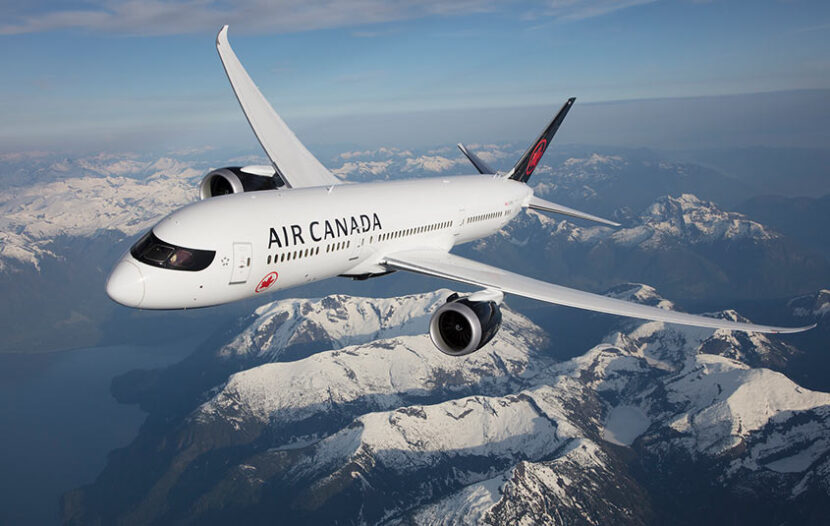MONTREAL — Air Canada’s capacity will rise higher – 150% higher, in fact – in 2022 versus 2021, averaging 75% of 2019 levels.
And by 2024, capacity should be 95% back to 2019 levels.
As impressive as those recovery numbers are, it was the air of determination, resolve and optimism that really made Air Canada’s 2022 Investor Day, held in-person and virtually, a stand-out.
For this team, after everything the company and the global airline and travel sectors have been through, it’s personal. “After two of the most difficult years ever in this industry, I could not be more excited to help rebuild this great company,” said Mark Galardo, Senior VP, Network Planning and Revenue Management, at today’s Air Canada 2022 Investor Day.
As capacity ramps up, Air Canada’s 26 new extra-long range (XLR) versions of the Airbus A321neo aircraft will play a key role, said Galardo. The aircraft purchase was announced earlier this month.
COVID-19, WAR AND NEW COMPETITION
Air Canada is keeping a close eye on the situation in Ukraine and potentially beyond in Europe. That’s not to mention anything else that might pop up – including new and familiar competition. “As we look forward, we will face many unknowns given the changing geopolitical landscape in the post-pandemic market,” said Galardo.

Mark Galardo, Senior VP, Network Planning and Revenue Management, Air Canada, March 30, 2022
“Not only will we face changing market dynamics, but also additional competition in nearly all markets,” he added. Airlines jockeying for position coming out of the pandemic include newcomers Canada Jetlines and Lynx Air, and expansion-minded Flair Airlines and Porter Airlines, not to mention WestJet, Swoop, Transat, and Sunwing.
“However we believe that the network diversification that Air Canada has remains a key competitive advantage that will continue to propel us forward,” said Galardo. “It has been a cornerstone of our international ‘Global Champions’ strategy.”
And, as Galardo notes, “Air Canada is an airline that is not overly dependent on any geographic sector to deliver profitability.”
That experience has been honed during the COVID-19 pandemic. Galardo says Air Canada has demonstrated its ability to pivot quickly out of markets that will have a longer recovery curve.
Case in point: Asia. While Vancouver is still Air Canada’s primary hub for Asian destinations, other hubs including Toronto, Montreal and Calgary are a key focus too, for destinations around the world. Asia may take longer than other regions to reopen post-COVID, but Air Canada doesn’t have all of its eggs in one basket.
“The strength and diversification of the Air Canada network and our ability to adapt will enable us to work towards profitability targets as we take on any of the upcoming challenges,” says Galardo.
THE NEW A321-XLRs AND TRANSBORDER & INT’L GROWTH
The new A321-XLRs are key to rebuilding Air Canada’s network.
“These 321-XLRs will provide Air Canada with extensive versatility. With this aircraft in our fleet, we can resume international growth without the economic burden of a longer wide-body airplane,” said Galardo.
With the A321-XLR’s long reach, Air Canada will be able to reach Europe and even Western Africa nonstop from both Montreal and Toronto.
The extra-long-range aircraft also fit into Air Canada’s expansion plans when it comes to the U.S., to destinations like L.A. and San Francisco. Plus, says Galardo, “we can free up wide-body aircraft that were on those transcontinental routes for potentially new international missions.
The A321-XLRs will also contribute to the achievement of Air Canada’s climate sustainability goals. “The A321-XLR really represents the next evolution in Air Canada’s growth profile,” says Galardo. “We’re excited about the growth possibilities enabled by this aircraft.”
Air Canada is currently the largest foreign carrier operating in the U.S., “and this is a title we aim to retain for the long term,” he adds. “The transborder is not only important for growing Canada-U.S. demand, but also for the development of our international network, as we plan to draw an increasing share of U.S. international transit traffic.”
Air Canada will offer 94 transborder routes in summer 2022, “two and half times greater than our closest competitor.” Cities including Atlanta, Austin and Seattle are just a few of the U.S. markets the company is investing in.
“The U.S. market continues to be the most lucrative and desirable aviation market in the world,” he said.
DISTRIBUTION & NDC STRATEGY
Galardo also spoke about distribution, including Air Canada’s NDC strategy. “Scientific and technological innovation have been part of revenue management at Air Canada for many years,” he said. “And all along we have worked around the constraints posed by a distribution process that is inflexible and inherited from earlier revenue management practices. We are now reaching the limits of this framework.”
He added: “Unlocking new revenues means distancing ourselves from fare classes, to best monetize our products and experiences. This opportunity is what we refer to as offer optimization. Its objective is to contextually and optimally bundle and price our product offers. This roadmap aims to position Air Canada at the forefront of the revenue management practice. And this roadmap will also ensure that Air Canada continues to generate strong revenues in the post-pandemic market dynamic.”

